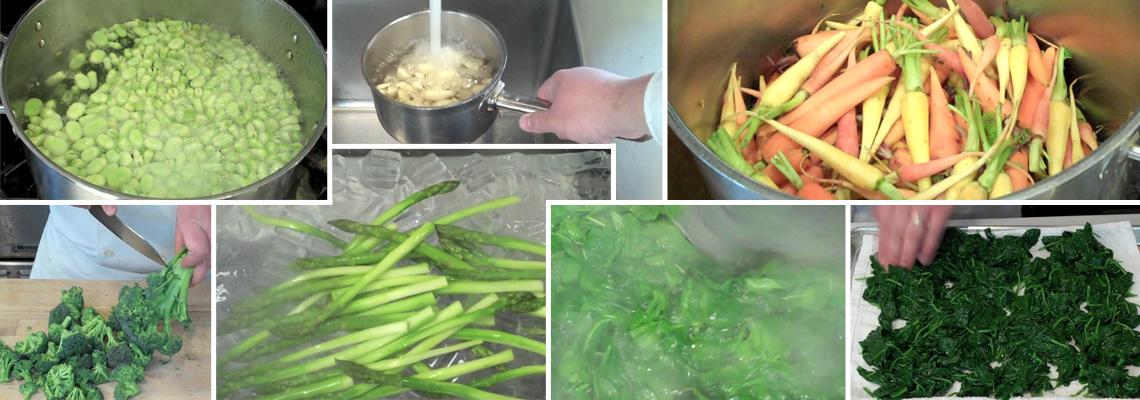Blanching is a basic technique every cook should intimately understand. In this episode of the Stella Culinary School podcast, we go over the underlying science behind blanching, talk best practices, and give various strategies customized for root vegetables, green vegetables, and proteins. When cooking vegetables, commonly a two step approach is taken in professional kitchens. The vegetables are first blanched to set their color and texture, and then finished with a secondary cooking method whether it be charring, sauteing, glazing, grilling, etc.
Details
Download & Listen To More Episodes
The Stella Culinary School Podcast is our core curriculum and the most effective method to gain knowledge and take your cooking to the next level. You can view and listen to all episodes by visiting the Stella Culinary School Podcast Index.
Subscribe to Podcast
There are 9 Comments

In my experience, whenever
In my experience, whenever you're going to heat greens, it is always best to blanch first. I think this true for two main reasons.
- As we discussed in this episode, acid is the enemy of chlorophyll molecules. When you blanch your greens properly in a large pot of water, the acid is released out and diluted instead of saturating back into the greens. If you were to wilt greens directly into a pan (which some people do and I have nothing against), you risk the acid in the greens leaching out and breaking down your chlorophyll molecules.
- The enzyme chlorophyllase is most active at 150-170ºF. Blanching first allows you to cook the greens above that temperature. When you then go to use them in a hot application, all your are doing is warming the greens through so they'll be hot to the touch. Even if you blanch the greens first, if you cook them for a prolonged period of time in the pan, the chlorophyll will still break down.
Also, as we discussed in this episode, when you drop greens directly into boiling water, it rapidly collapses the cells that contain oxygen, which gives you that instant change to bright green. In my experience, this doesn't happen as rapidly or as evenly when putting raw greens into a saute pan.
However, there are times when I will wilt greens directly into a sauce or a dish (usually pasta) that hasn't been blanched first. I opt for this when I want the greens to still be relatively vibrant and fresh. When I add the greens, it is always right at the end, after I've already turned off the flame and right before the dish hits the plate.
and not to forget: 3.
and not to forget:
3. blanching in crazy boiling water removes some of the dirt and grid you missed while cleaning you're vegetables - not that you should ever try blanching dirty food anyway!

It's amazing what a
It's amazing what a difference a simple technique like blanching can make, huh? Glad you're playing around with the technique.

What you're talking about is
What you're talking about is enzymatic browning or oxidation. Whenever I "turn" or trim artichokes, I just use acidulated water (usually lemon). For the most part, you want to trim the artichokes before cooking.

@lenb, The microwave won't
@lenb,
The microwave won't give you the same results but there's no harm in giving it a try to find out if it works for you. You can try doing a microwave steamer, and then ice afterwards, but putting green vegetables in the microwave without any steam could effect their color, flavor and texture.
If you try this, let me know how it turns out.





